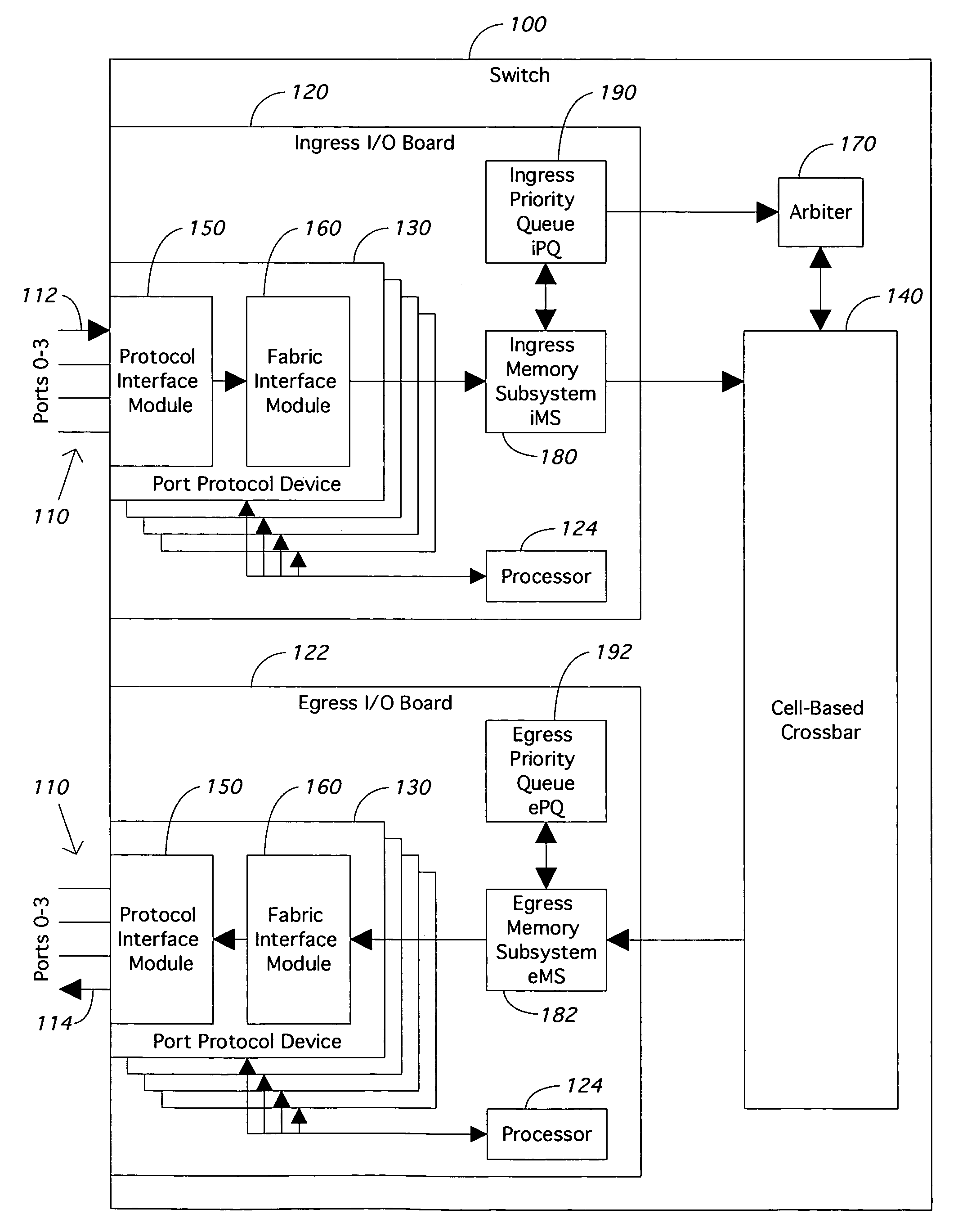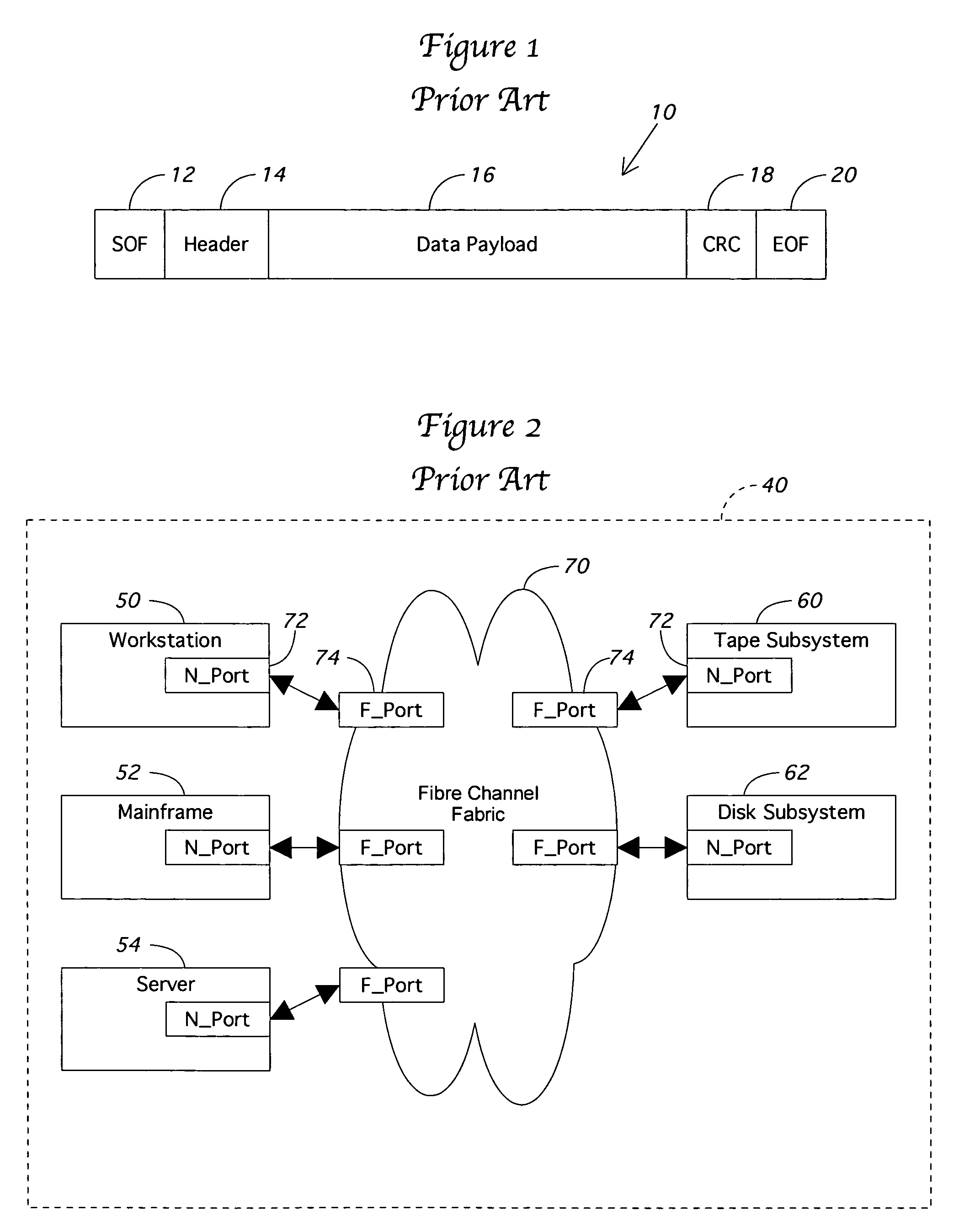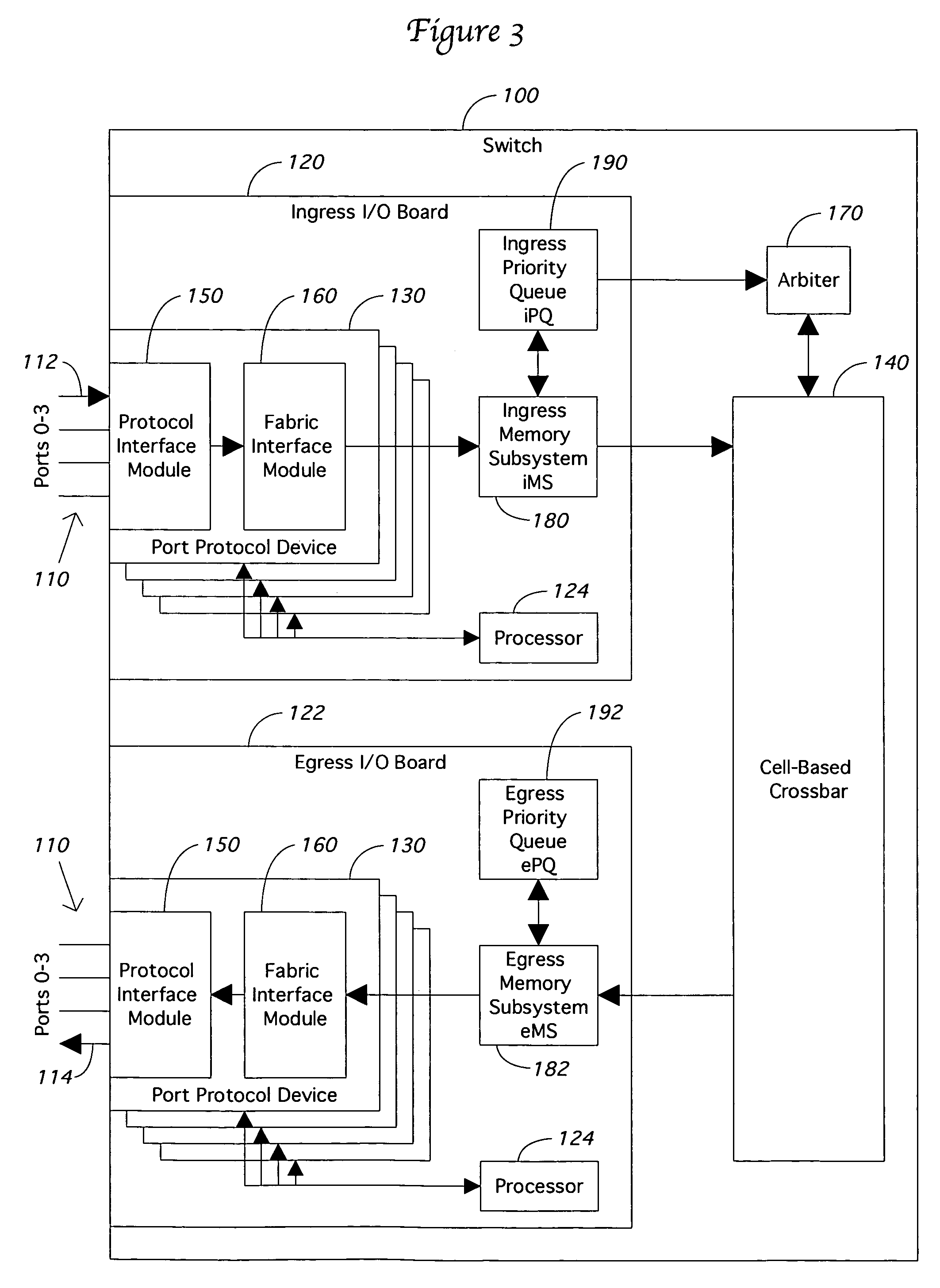Method and apparatus for rendering a cell-based switch useful for frame based protocols
a cell-based switch and frame-based protocol technology, applied in data switching networks, frequency-division multiplexes, instruments, etc., can solve problems such as inacceptable frame transmission time latency
- Summary
- Abstract
- Description
- Claims
- Application Information
AI Technical Summary
Benefits of technology
Problems solved by technology
Method used
Image
Examples
Embodiment Construction
Switch Overview
[0027]The present invention is best understood after examining the major components of a Fibre Channel switch, such as switch 100 shown in FIG. 3. The components shown in FIG. 1 are helpful in understanding the applicant's preferred embodiment, but persons of ordinary skill will understand that the present invention can be incorporated in switches of different construction, configuration, or port counts.
[0028]Switch 100 is a director class Fibre Channel switch having a plurality of Fibre Channel ports 110. The ports 110 are physically located on one or more I / O boards inside of switch 100. Although FIG. 3 shows only two I / O boards, namely ingress board 120 and egress board 122, a director class switch 100 would contain eight or more such boards. The preferred embodiment described in the application can contain thirty-two such I / O boards 120, 122. Each board 120, 122 contains a microprocessor 124 that, along with its RAM and flash memory (not shown), is responsible for...
PUM
 Login to View More
Login to View More Abstract
Description
Claims
Application Information
 Login to View More
Login to View More - R&D
- Intellectual Property
- Life Sciences
- Materials
- Tech Scout
- Unparalleled Data Quality
- Higher Quality Content
- 60% Fewer Hallucinations
Browse by: Latest US Patents, China's latest patents, Technical Efficacy Thesaurus, Application Domain, Technology Topic, Popular Technical Reports.
© 2025 PatSnap. All rights reserved.Legal|Privacy policy|Modern Slavery Act Transparency Statement|Sitemap|About US| Contact US: help@patsnap.com



